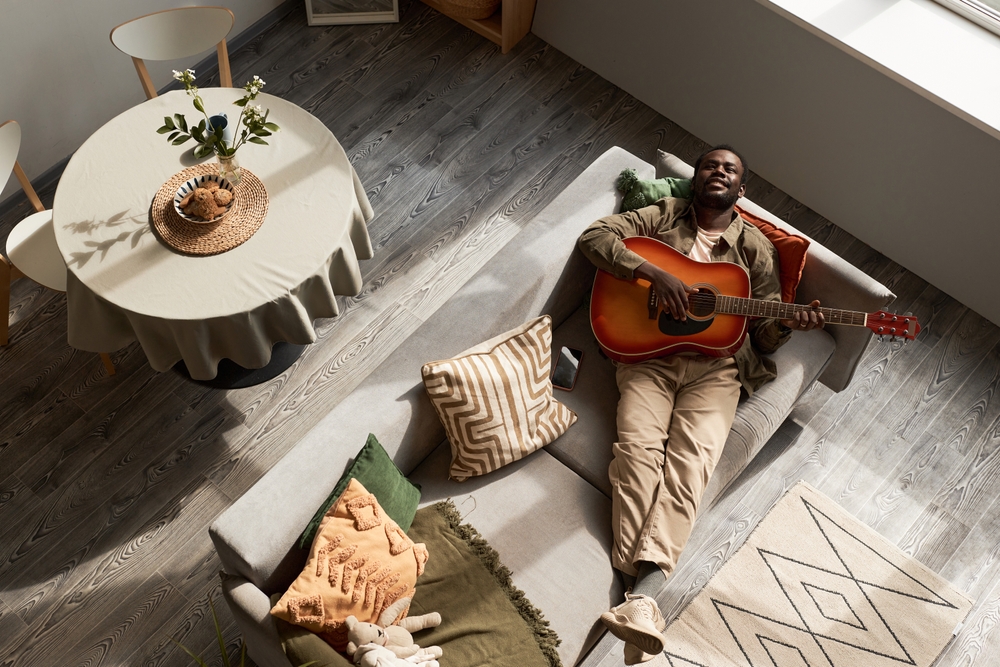In the swirling uncertainty of today’s housing market, young professionals are reimagining their relationship with temporary living spaces. Rather than viewing rentals as mere way stations on the path to homeownership, a growing movement embraces these spaces as canvases for personal expression and emotional well-being. This approach, known as “dopamine decor,” represents a philosophical shift that prioritizes immediate joy over delayed gratification.
The Science of Space
Emotional design principles underscore the psychological impact our surroundings have on mental health. Neurological research demonstrates that intentionally designed environments can trigger the release of dopamine—the brain’s feel-good neurotransmitter—creating sustained states of happiness and contentment.
The colors, textures, and objects we surround ourselves with create constant sensory input that affects everything from mood regulation to productivity. Neuropsychologists have long recognized these connections between environmental stimuli and emotional responses, though many people remain unaware of how deeply their surroundings affect their mental state.
This science forms the foundation of dopamine decor, a design philosophy that prioritizes emotional response over conventional aesthetics. Unlike trend-driven approaches that quickly feel dated, dopamine decor cultivates spaces that continue to evoke positive emotional responses over time.
Breaking the Waiting Game
Many renters, particularly those from communities where homeownership represents a significant achievement, struggle with the concept of investing in temporary spaces. The conventional wisdom suggests saving every possible dollar toward a down payment rather than wasting resources on rental improvements.
This perspective fails to account for the psychological cost of living in spaces that feel impersonal or transitional. Community advocates have observed that this mindset can create an unhealthy pattern of postponed joy, where individuals continuously defer creating environments that nurture their well-being.
The dopamine decor approach rejects this delayed gratification model. Instead, practitioners embrace their current circumstances while creating spaces that reflect their identities and aspirations. This shift represents a nuanced understanding of wealth-building that includes emotional wealth alongside financial assets.
Creating Your Sensory Sanctuary
Transforming a rental into a dopamine-triggering sanctuary requires thoughtful curation rather than excessive spending. Interior design educators recommend focusing on four key elements that deliver maximum emotional impact without risking security deposits or breaking leases.
Colored Glass as Light Therapy
Transformative transparency emerges when strategically placed colored glass catches natural light, bathing spaces in gentle hues that shift throughout the day. This effect creates subtle mood enhancement without permanent modifications.
Beyond traditional vases and drinkware, consider incorporating stained glass window hangings, colored glass drawer pulls, or translucent room dividers. These elements introduce dynamic light play that transforms even the most architecturally uninspired rental.
The psychological impact of colored light operates on both conscious and unconscious levels. Blues and greens promote calm and focus, while warm ambers and soft pinks create environments conducive to relaxation and connection.
Investment Furniture as Foundation
Quality over quantity defines the dopamine decor approach to furniture. Rather than filling spaces with disposable pieces, practitioners invest in fewer, higher-quality items that provide both function and emotional resonance.
This strategy might involve allocating resources toward a single statement piece—perhaps a velvet sofa in a bold hue or a handcrafted dining table—that anchors a room’s identity. These investment pieces often appreciate in value over time, both financially and emotionally, as they accumulate memories and associations.
Look beyond mass-market retailers to discover unique pieces with character and craftsmanship. Estate sales, auctions, and independent makers offer opportunities to acquire distinctive furniture that won’t appear in every apartment building.
Cultural Art as Identity Affirmation
Visual storytelling through art represents perhaps the most direct application of dopamine decor principles. Curating art that reflects cultural heritage, personal values, and aesthetic preferences creates powerful visual anchors throughout living spaces.
For many Black women especially, displaying works by Black artists serves as both self-affirmation and cultural celebration. Art historians note that surrounding oneself with images and objects that reflect one’s identity counters the exclusion often experienced in mainstream spaces.
Beyond traditional wall art, consider sculptural pieces, textiles, and functional art objects that can be incorporated throughout your space. These elements create moments of connection and recognition throughout daily routines.
Ambient Lighting as Mood Architecture
Strategic illumination transforms spatial perception and emotional response. Rejecting harsh overhead lighting in favor of layered, adjustable options creates environments that can shift from energizing to intimate with minimal effort.
Tapered candles represent a particularly potent form of dopamine-triggering illumination. Their elongated form creates visual elegance, while their warm, flickering light activates primal associations with safety and community. Incorporating candlelight into regular evening rituals—not just special occasions—elevates ordinary moments into celebrations.
Complementary lighting sources might include salt lamps, string lights, or adjustable sconces that can be mounted without permanent installation. These elements work together to create customizable atmospheric conditions suited to different activities and moods.
The Philosophy of Intentional Living
The dopamine decor movement represents a broader philosophical shift toward intentionality in all aspects of life. Rather than passively accepting environments designed for neutrality and mass appeal, practitioners actively curate spaces that support their emotional needs and aspirations.
This mindset extends beyond aesthetic choices to encompass the complete sensory experience of home. Thoughtfully selected scents, textures, and sounds complement visual elements to create fully immersive environments that nurture well-being.
Housing advocates frame this approach as radical self-care: creating beauty in immediate surroundings becomes an act of resistance in a world that often tells marginalized people to wait their turn for joy.
Redefining Home on Your Terms
As rental periods grow longer for many young professionals, the distinction between temporary and permanent housing becomes increasingly blurred. The dopamine decor movement acknowledges this reality while empowering renters to create meaningful connections to their current spaces.
By investing thoughtfully in your environment—regardless of ownership status—you assert your right to inhabit spaces that nourish rather than deplete. This perspective transforms the rental experience from a holding pattern into a legitimate chapter of life, worthy of being fully lived and enjoyed.
The true power of dopamine decor lies in its recognition that our surroundings shape our internal landscape. By cultivating spaces that trigger joy, we program our neural pathways for increased happiness, creativity, and resilience—benefits that extend far beyond any lease agreement.

















